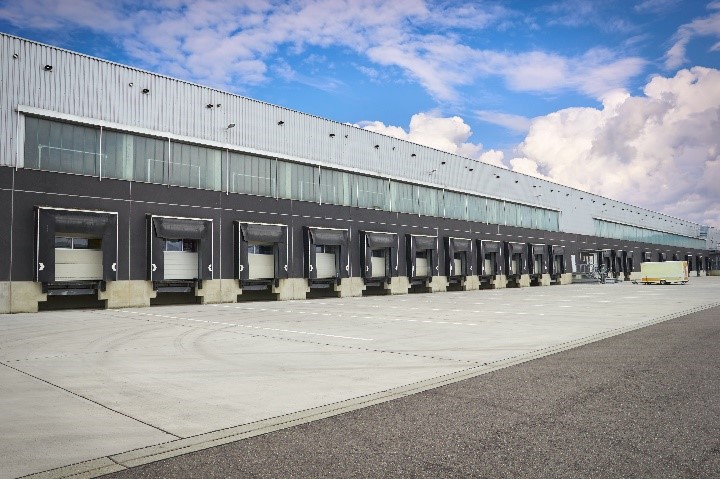Loading bay security can be critical to the goods manufactured, sorted, or stored at a facility. It is especially important for facilities within the industries of Food & Beverage and Pharmaceutical. These industries are responsible for providing goods to consumers that could be critical to their wellbeing and are required to be safe for consumption. If their goods were to be compromised it could result in serious health implications for individuals and even potential death.
Therefore, protecting and securing the goods transported at the loading bay is of the utmost importance to safely deliver goods of high quality to consumers.
The Loading Bay
The loading bay is an influential piece of every company transporting goods to consumers, distributors or end users that connects the inside workings of a facility to the outside world. It is important that the loading bay is a secure as possible to prevent serious events from occurring that could impact not only the company but individuals’ health and safety.
Unfortunately, stealing cargo through an unsecure loading bay is a somewhat common event and can have a large impact on costs & profits. Worldwide, the direct cost of cargo theft exceeds $30bn annually with indirect costs many times higher.
Stolen pharmaceuticals specifically offer an extreme risk to both the company and the public. Many times, stolen drugs end up listed online on internet domains owned by criminal networks. Consumers may look to buy their prescriptions online which in some instances causes major risk. These stolen drugs are most often not stored properly under the necessary conditions needed to protect the medication.
In other instances, stolen drugs may have been altered and contain hazardous substances. The stolen now “diverted” drugs not only put consumers at risk but also have major implications on the pharmaceutical brands image and reputation. (NCBI)
Spoiled goods
Many goods and products, especially within the Food & Beverage and Pharmaceutical industries, are required to be stored within temperature-controlled environments. The quality of the food, beverage, or drug could be compromised if specific environmental temperature conditions are not met. It is crucial that air cooled or heated to a specific temperature to maintain the quality of the goods or products produces, sorted, or stored on site is not affected by opening and closing of the loading bay door.
If the loading bay door is not secure and can be tampered with, it could alter the controlled temperature of the internal environment. If the temperature is unknowingly altered, a facility could potentially incur thousands in costs within a matter of minutes.
Costs can incur from spoiled and wasted goods and energy costs generated by the altered heated or cool air entering or leaving the facility. A change in temperature can cause bacteria to form, making the food no longer safe to eat.
The loading bay connects the inside of the facility to the outdoor environment and elements. To mitigate the risk of rain, snow, dust, and insects from entering the openings at the loading bay, most bays are equipped with seals and shelters to help protect from the outside elements. Although the risk is mitigated with these types of solutions, they do not eliminate debris completely entering the facility. These debris have the potential to contaminate goods inside the facility and force companies to throw out affected goods. This in turn can cost companies thousands and even millions in lost product and time spent removing debris or outside elements that have made their way inside the facility.
It is important to properly secure the loading bay to reduce the risk of cargo theft, spoiled goods, and contamination. As mentioned previously, bay seals and shelters are a great way to protect your bay from these risks. Another way to secure your loading bay is ensuring that the bay door is closed when not in use. Some loading bay safety systems prevent the door from being opened unless a trailer is at the bay ready to be loaded or unloaded. This ensures the loading bay is safe, secure and that goods are protected.
No matter how facilities choose to secure their loading bay it is critical to ensure the quality and safety of the goods manufactured, sorted, or stored as it can have massive implications on the public’s health & safety if not secured properly.
Castell Safety International believes everyone has the right to be safe at work. It protects people and assets within the energy, industry, and logistics sectors. Its logistics solution, Salvo Loading Bay Safety System, is a safe, secure, and simple solution that prevents accidental drive-aways at the loading bay. The safety solution interlocks the trailers airbrakes with the bay door, only allowing the bay door to open once that trailer is locked out and secured.






